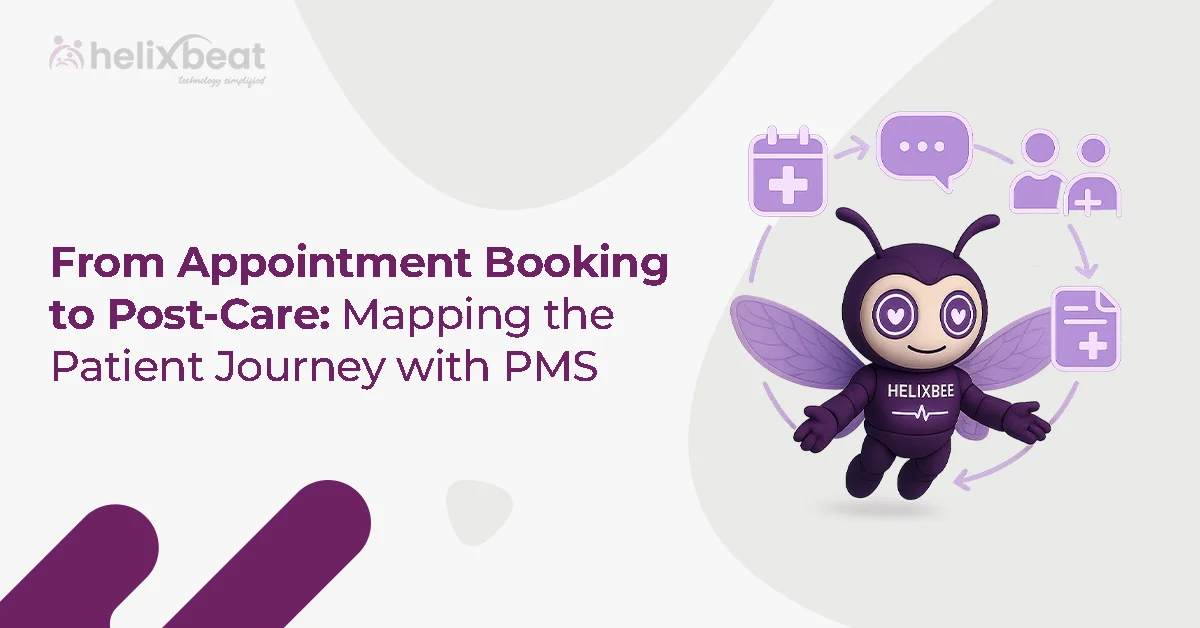Imagine launching a website or app, only to find users struggling with confusing navigation, broken links, or accessibility issues. Frustrated customers may leave, and businesses risk losing both revenue and credibility. In fact, WebAIM’s 2023 Accessibility Report found that 96.3% of homepages had detectable accessibility errors, showing how common these issues are across the web.
Ignoring UX and accessibility can frustrate users, hurt engagement, and even lead to legal trouble. That’s why manual testing services are so important. While automated tools can speed up testing, they can’t fully capture human experience. Manual testing allows real users to evaluate how easy and accessible an application truly is.
But what exactly does manual testing involve, and why does it matter so much for UX and accessibility? Let’s dive in and find out.
Table of Contents
What Are Manual Testing Services?
When developing a website, app, or software, it’s important to test how real users interact with it. Manual testing services involve testers manually navigating the product to identify usability, accessibility, and functionality issues that automated tools might overlook. This hands-on approach helps businesses create a smooth and accessible experience for all users.
Unlike automated testing, which follows predefined scripts, manual QA testing services provide a human perspective. Testers can detect navigation problems, unclear content, color contrast issues, and other accessibility barriers that may affect users, including those with disabilities.
Additionally, manual testing ensures compliance with accessibility standards like WCAG (Web Content Accessibility Guidelines) and ADA (Americans with Disabilities Act). By evaluating the product from a real user’s point of view, businesses can enhance usability, reduce frustration, and improve overall engagement, leading to a more inclusive digital experience.
Why Manual Testing Is Essential for UX and Accessibility Compliance?
Creating a user-friendly and accessible digital experience requires more than just automated checks. Manual testing services allow real testers to interact with websites and apps as actual users would, uncovering issues that automated tools often miss. Let’s explore why manual QA testing services play a crucial role in improving usability and ensuring accessibility compliance.
Detecting Real-World User Experience Issues
Automated tests follow set patterns, but real users don’t always behave predictably. Manual testing services help identify practical usability challenges such as:
- Menus or buttons that are difficult to locate
- Forms that are confusing or take too long to complete
- Workflows that require unnecessary steps
- Features that don’t function as expected in real-life use

For example, a banking app might pass an automated test but frustrate users if key transactions require too many steps. Manual QA testing services highlight such inefficiencies, allowing businesses to refine the user experience.
Identifying Accessibility Gaps That Automated Tools Miss
Automated accessibility testing tools can detect coding errors, but they cannot evaluate:
- How well users navigate using a keyboard instead of a mouse
- Whether screen readers correctly interpret content
- If the site’s structure and language are clear for neurodiverse users

For instance, a government portal might pass a WCAG compliance scan but still be difficult for blind users who rely on screen readers. Manual testing services bridge this gap by simulating real user experiences and identifying barriers that automated tools overlook.
Checking Compliance with Accessibility Laws
Laws like the ADA (U.S.) and Section 508 (U.S. government websites) require businesses to make their digital platforms accessible to all users. Failure to comply can lead to lawsuits and financial penalties. In 2021, Accessibility.com reported 2,352 web accessibility lawsuits filed against U.S. businesses—a 14.3% increase from the previous year. This trend underscores the growing importance of accessibility compliance.
Manual QA testing services help businesses identify and fix accessibility barriers before they turn into legal issues. By conducting real-world usability tests, manual testers ensure that websites and apps are accessible to users with disabilities, reducing the risk of legal action and improving overall user experience.
Evaluating Multi-Device and Browser Compatibility
Users access websites and apps on various devices and browsers, which can affect performance and usability. Manual testers check for:
- Whether designs adjust properly across mobile, tablet, and desktop
- If content displays correctly on different browsers
- How touchscreen users interact with buttons and menus

For example, a travel booking site might work smoothly on Chrome but experience layout issues on Safari. Manual testing services help prevent such inconsistencies, ensuring a smooth experience across platforms.
Providing a Realistic User Perspective
Real users have different expectations, frustrations, and levels of technical knowledge. Manual QA testing services replicate actual user behaviors, helping to identify pain points that automated scripts cannot detect.
For instance, a food delivery app might function properly but cause frustration if restaurant filters are difficult to use. Manual testing services help businesses refine these details, making the user experience more intuitive.
By incorporating manual testing alongside automation, businesses can develop digital products that are not only functional but also truly user-friendly and accessible.
Real-World Scenarios Where Manual Testing Services Improve UX and Accessibility
Manual testing services are essential for identifying usability and accessibility issues that automated tools may overlook. Here are a few real-world examples where manual QA testing services help improve user experience and ensure compliance with accessibility standards.
Example 1: Testing Checkout Accessibility on an E-Commerce Website
A tester manually navigates through the checkout process using only a keyboard to evaluate accessibility for users who rely on assistive technology. They check whether form fields have clear focus indicators, buttons are labeled correctly for screen readers, and pop-ups do not interfere with navigation. Identifying and addressing these issues makes the checkout process smoother for all users, including those with disabilities.
Example 2: UX Testing for Elderly Users in a Mobile App
To ensure an app is user-friendly for older adults, a tester evaluates its usability by increasing the font size to check readability, testing voice commands for hands-free navigation, and assessing the size and responsiveness of buttons. These checks help improve accessibility for users with visual impairments or limited dexterity, making the app more inclusive.
Example 3: Verifying Dark Mode Compatibility
A tester manually switches between dark and light modes to identify color contrast issues that may affect readability. They also check if the background and text colors adjust properly to maintain a comfortable viewing experience for users who prefer dark mode. Addressing these concerns enhances accessibility for users with light sensitivity or vision impairments.

By incorporating manual QA testing services, businesses can ensure their websites and applications provide a smooth, accessible, and inclusive experience for all users.
Key Factors to Consider When Using Manual Testing Services for UX and Accessibility
Manual testing services play an essential role in making digital products accessible and user-friendly. To get the best results, businesses should focus on these important aspects:
Define Accessibility Standards Clearly
Before beginning manual QA testing services, it is crucial to establish clear goals based on recognized guidelines such as WCAG 2.1, ADA, or Section 508. These standards ensure that websites and applications cater to all users, including those with disabilities.
Include Testers with Disabilities
To gain real-world insights, involving testers who rely on assistive technologies is highly beneficial. They can identify navigation barriers, screen reader compatibility issues, and other challenges that automated testing tools might overlook.
Keep UX Testing Protocols Up to Date
As technology and user behavior evolve, UX testing should be regularly updated. Websites and apps need continuous evaluation to stay aligned with current accessibility requirements and user expectations.
Use a Combination of Manual and Automated Testing
Automation can quickly detect coding errors, but manual QA testing services provide a human perspective on usability. Combining both methods ensures comprehensive testing for accessibility and functionality.
Partner with Helixbeat for UX & Accessibility Testing
Helixbeat specializes in manual testing services to help businesses improve their digital experiences. From mobile apps to web platforms, their testing ensures accessibility compliance and a smooth user journey across different devices.

To Wrap It up
Manual testing services play a key role in making digital products both functional and user-friendly. UX and accessibility compliance determine whether users have a seamless experience or encounter barriers that drive them away. Unlike automated tools, manual QA testing services provide real human feedback, helping businesses identify usability challenges and create more inclusive experiences.
By prioritizing manual testing services, businesses can reduce legal risks, enhance customer satisfaction, and improve accessibility for a wider audience. Partnering with Helixbeat gives companies the expertise needed to refine their digital platforms, ensuring they meet industry standards while delivering a smooth and engaging user experience.
FAQs
1. What is manual testing in UX and accessibility compliance?
Manual testing involves human testers evaluating websites or apps to identify usability and accessibility issues.
2. Why is manual testing better than automation for accessibility?
Manual testing captures real user experiences, especially for screen readers, keyboard navigation, and cognitive accessibility.
3. How does manual testing improve website usability?
It ensures navigation ease, readability, form usability, and overall user satisfaction.
4. What accessibility laws require manual testing?
ADA, WCAG, Section 508, and EAA guidelines emphasize human testing for digital inclusivity.
5. What tools complement manual accessibility testing?
Tools like Axe, WAVE, and JAWS aid manual testers but don’t replace human evaluation.
6. How often should a website undergo manual accessibility testing?
Regular testing is recommended, especially before product launches and updates.
7. Does manual testing cover mobile accessibility?
Yes, it ensures apps are accessible via touch, voice commands, and screen readers.














